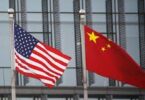Kirill Grishin
The combination of economic stagnati-on and rising inflation is called stagflation. It is this problem that threatens the world. Bla-me for the acceleration of US prices, they continue to print dollars. And the world may also face hype-rinflation. Why are these phenomena dangerous?
Two thirds of the “Group of Twenty” are inflation exceeding the target, but “in many developed countries, inflationary pressures are unprecedented scale,” said Russian Finance Minister Anton Siluanov at a meeting of central bank governors and heads of financial departments of the G20. Against this background, Russia, according to the head of the Ministry of Finance, manages to maintain a normal balance between budgetary and monetary policy. The minister recommended that his colleagues from the G20 countries also take control of the rise in prices. Will they listen or not – we will find out in the near future.
Stagflation is an extrem-ely dangerous state of the e-conomy. The term is deri-ved from the words “inflation” and “stagnation”. Ev-eryone knows what inflation is. An economic recession is called stagnation, in which unemployment rises, industrial production falls, and the purchasing power of the population also decr-eases – people do not buy durable goods, they try to s-ave money. In general, this is stagnation, in a simple way.
Stagflation is particularly noticeable in the United States, the world’s largest e-conomy, which is 70% consumption-based. By the w-ay, in the 1970s there was already such a thing. Usu-ally, when the economy go-es down in a country, inflation goes down along with it. Therefore, the current si-tuation in the US is unusual. Because half a century ago there was also stagflation, but the ratio of gover-nment debt to US GDP was much more comfortable.
Now the situation is alar-ming on the whole. The ec-onomy does not shine eith-er in Europe, or in China, or in a number of other countries: no one has reached pre-pandemic indicators.
By the way, the delta coronavirus strain is preventing many sectors from reopening and hitting global supply chains, ports and logistics. Lack of key resources such as semiconductors further complicates the production of cars, electronics and other consumer durables, driving inflation. It looks like a perfect storm that, in principle, shouldn’t last too long, writes renowned economist Nouriel Roubini, who predicted the 2008 crisis.
But the problems are much more serious. And they come from the USA. There is a giant stimulus package at work. The total fiscal stimulus introduced in the United States over the past year is almost $ 6 trillion, a third of the country’s GDP. A new tranche of $ 3-3.5 trillion is on its way, which Congress is now discussing. And then the Federal Reserve System (FRS) will roll back stimulus. But never say never, as they say. The situation may deteriorate, but the US does not know how to “cure” the economy – they just flood it with money. Namely, the pumping of dollars into the system has become a catalyst for the acceleration of global inflation, said earlier aide to the President of Russia Maxim Oreshkin. She could have provoked an energy crisis this year.
Meanwhile, the Fed continues to increase the money supply, which could lead to hyperinflation. The pace of quantitative easing is five times higher today than it was before the pandemic.
Given the White House’s passion for spending, the dollar could depreciate sharply, driving oil into the $ 180 a barrel region by the end of 2022. In the spring of 2021, no one could have thought that gas would cost under two thousand dollars per thousand cubic meters. So it is here: the market should not be underestimated.






